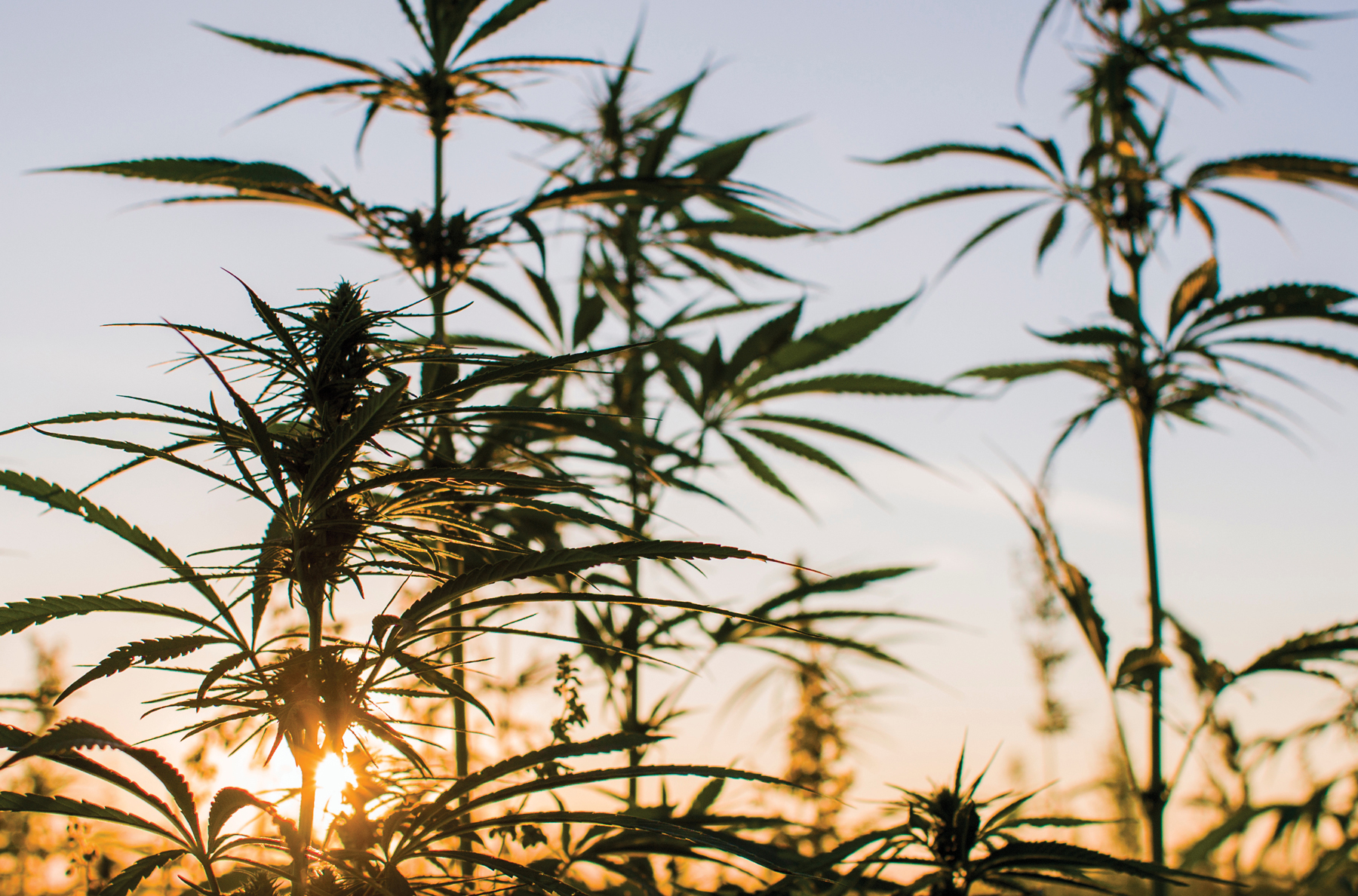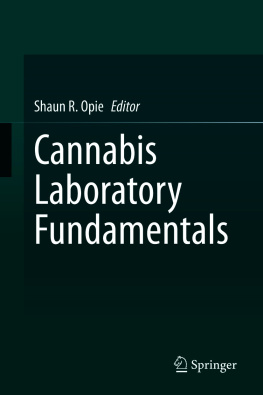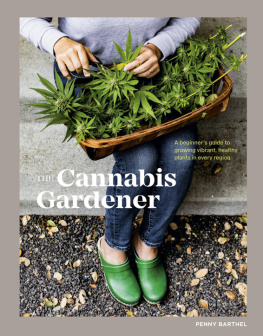Thank you for buying this ebook, published by HachetteDigital.
To receive special offers, bonus content, and news about ourlatest ebooks and apps, sign up for our newsletters.
Copyright 2017 by Leafly Holdings, Inc.
Cover design by Jarrod Taylor. Cover copyright 2017 by Hachette Book Group, Inc.
Interior design by Jason Snyder
Hachette Book Group supports the right to free expression and the value of copyright. The purpose of copyright is to encourage writers and artists to produce the creative works that enrich our culture.
The scanning, uploading, and distribution of this book without permission is a theft of the authors intellectual property. If you would like permission to use material from the book (other than for review purposes), please contact permissions@hbgusa.com. Thank you for your support of the authors rights.
Twelve
Hachette Book Group
1290 Avenue of the Americas, New York, NY 10104
twelvebooks.com
twitter.com/twelvebooks
First Edition: December 2017
Twelve is an imprint of Grand Central Publishing. The Twelve name and logo are trademarks of Hachette Book Group, Inc.
The publisher is not responsible for websites (or their content) that are not owned by the publisher.
The Hachette Speakers Bureau provides a wide range of authors for speaking events. To find out more, go to www.hachettespeakersbureau.com or call (866) 376-6591.
Library of Congress Cataloging-in-Publication Data
Names: Leafly.
Title: The Leafly guide to cannabis / The Leafly Team.
Description: First edition. | New York : Twelve, [2017] | Includes bibliographical references.
Identifiers: LCCN 2017029741| ISBN 9781455571994 (paper over board) | ISBN 9781478923572 (audio download) | ISBN 9781538711545 (ebook)
Subjects: LCSH: MarijuanaTherapeutic use. | Marijuana. | Cannabis.
Classification: LCC RM666.C266 L43 2017 | DDC 615.3/23648dc23
LC record available at https://lccn.loc.gov/2017029741
ISBNs: 978-1-4555-7199-4 (hardcover), 978-1-5387-1154-5 (ebook), 978-1-4789-2357-2 (audiobook, downloadable)
E3-20180119-JV-PC
For the advocates, connoisseurs, newcomers, budtenders, and the just plain curious.
This book is intended to provide the authors information and opinions, based upon their experiences, research, and anecdotal information. It is not intended to provide legal guidance. Readers should understand that the use and distribution of cannabis are governed by federal and state laws that vary widely, and that such activities remain illegal in many jurisdictions. Readers are advised to obtain professional legal advice about the current state of the law applicable to their own location and circumstances before using cannabis or following any ideas or suggestions in this book. Readers are reminded of their obligation to abide by applicable laws.
This book is not intended to provide medical or other health advice, diagnosis or treatment, or to cover all possible uses, directions, precautions, or adverse effects involving cannabis. Any statements or claims about possible health benefits or effects have not been evaluated by the U.S. Food and Drug Administration. Those effects can vary widely, and may also raise safety concerns, depending on the individual consumer, the products composition, the consumption method used, and other variables. Readers are advised to consult their own personal medical and other health care professionals before commencing use of cannabis or following any ideas or suggestions in this book. Readers should not disregard or delay seeking professional advice relating to any condition, act, or symptom because of something contained in this book.
The authors believe the facts in the book are accurate as of the date of production. However, the content of the book could include technical inaccuracies or other errors.
Readers are advised that the use of products and information discussed in the book is done solely at their own risk. The authors and the publishers do not assume, and specifically disclaim, any responsibility for any loss, damage, injury, or other consequences resulting from any readers use or application of any of the information discussed in the book.
The Leafly Team, March 7, 2017

 FOR MOST OF its history, cannabis has remained shrouded in code words, mystery, and misinformation. Its time we ended all that. This book, crafted by our staff of cannabis connoisseurs at Leafly, is your guide to clarity and understanding.
FOR MOST OF its history, cannabis has remained shrouded in code words, mystery, and misinformation. Its time we ended all that. This book, crafted by our staff of cannabis connoisseurs at Leafly, is your guide to clarity and understanding.
Cannabis, marijuana, weed, reefer, pot, ganja, joints, tokes, hash, blunts, dabs, wax, shatter: To those not steeped in the subculture, the jumble of terms can be as confusing as a foreign tongue. Relax. Its okay. That was their intended purpose. For decades, obfuscation has gone hand in hand with illegality. Before legalization, a cannabis sale required dexterity in a language as hidden as the space in which the transaction occurred. One did not simply offer up marijuana for sale, or request a half ounce of same. There were murmurs of herb, kine bud, dime bags, and Maui Wowie.
That strange argot served a double purpose. Vernacular fluency marked a buyer or seller as an experiencedand hence trustedparticipant. It separated the authentic consumer from the undercover narc. In Richard Linklaters classic film Dazed and Confused, the endearing stoner Slater grills a newcomer to the scene: You cool, man? Another character translates the Slaterism: He was just asking if you get high. More to the point: He was asking if the newcomer could be trusted to not report the illicit goings-on.
The groovy terms also acted as brand names in a market that allowed no legitimate branding. When cannabis came in unmarked plastic bags, the sellers words were the buyers only assurance of quality. Those words often conjured exotic localesPanama Red, Acapulco Goldthat served to mask the poor quality of the Mexican brick weed under discussion. Mexican brick weed is a slang phrase for inferior cannabis, usually a mix of dried leaves, seeds, and stems. The name is taken from the way the product is pressed into brick form to be packed and smuggled from Mexico.
See? Now you know what Mexican brick weed is, and why to avoid it. Mystery solved. At Leafly, this is what we do.

Fortunately, for more and more Americans the days of plastic bags and brick weed are behind them. (Of course, you have to check if youre in a legal state first.) In most medically legal states, and in an increasing number of legal adult-use states, cannabis is grown by state-licensed farmers, bundled in smart packages, and sold in well-appointed dispensaries and retail boutiques. Cannabis flowerwhat you might have called weednow appears in hundreds of varieties known as strains. An array of new products and delivery systems fight for space on the dispensary shelves: vape pens and oil cartridges, shatter, rosin, wax, edibles, inhalers, infused beverages, tinctures, capsules, suppositories, transdermal patches, and topical balms. Though regulations vary by state, most products are tested for potency and purity. All are backed by real brands, which means the market will reward the maker for delivering a consistent, high-quality product. Unlike, say, whoever stuffed that brick weed into the bag.










 FOR MOST OF its history, cannabis has remained shrouded in code words, mystery, and misinformation. Its time we ended all that. This book, crafted by our staff of cannabis connoisseurs at Leafly, is your guide to clarity and understanding.
FOR MOST OF its history, cannabis has remained shrouded in code words, mystery, and misinformation. Its time we ended all that. This book, crafted by our staff of cannabis connoisseurs at Leafly, is your guide to clarity and understanding.